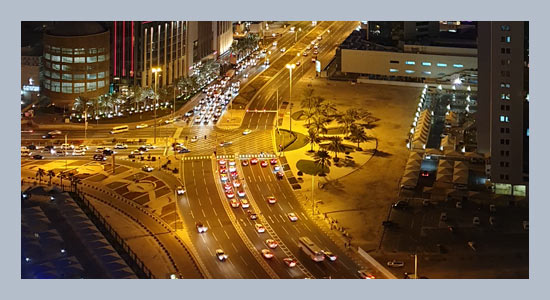Jamal Al-Matawah1, a and Khair Jadaanb a Department of Civil Engineering, College of Technological Studies in Kuwait
b Department of Civil Engineering, University of Jordan
Download Citation:
|
Download PDF
The dramatic increase in vehicle travel in developing countries calls for the effective introduction of features that reduce traffic accidents. An important piece of information for such an introduction lies in the prediction of accidents and their fatalities, which is addressed in this paper. Smeed’s model was originally developed for the prediction of traffic fatalities in both developed and developing countries. More reliable prediction models are developed for a number of Arab countries, producing a much less absolute percentage error than those of Smeed’s model. Regression analysis was applied to time-series data in the studied countries, producing an absolute percentage error as low as 7.67 for Saudi Arabia and 12.17 for Kuwait. An accident prediction model that relates accident frequency in Kuwait to various contributory factors is developed using the Generalized Linear Modelling (GLM) technique. The final model shows that age, nationality, aggressive driver behaviour, dangerous offences, perception of effectiveness of enforcement, marital status, speed, and experience are the main contributory factors that lead to accident involvement.ABSTRACT
Keywords:
road safety; prediction models; developing countries.
Share this article with your colleagues
REFERENCES
ARTICLE INFORMATION
Accepted:
2010-09-07
Available Online:
2010-10-01
Al-Matawah, J., Jadaan, K. 2010. Application of prediction techniques to road safety in developing countries. International Journal of Applied Science and Engineering, 8, 11–17. https://doi.org/10.6703/IJASE.2010.8(1).11
Cite this article:






